Localizing your ad campaigns is a great way to improve PPC performance in international markets. It enables you to create highly targeted ads that engage with a more specific audience, so you can reach a wider range of potential customers.
According to research by Unababel, 84% of businesses agree that localized marketing has a positive impact on revenue growth. So if PPC is a key element of your marketing strategy, it’s worth spending time on keyword localization and other international PPC optimization methods.
In this article, you’ll learn all about localizing your ad campaigns so you can get the most from your global PPC efforts. We’ll look at:
- Finding the right keywords to target for each location.
- How to adjust your bids by location.
- Effective ways to adapt your creative assets for buyers around the world.
- More techniques for optimizing international PPC campaigns.
- What marketers are saying about ad campaign localization.
What is PPC campaign localization and why is it important?
Ad campaign localization isn’t quite as simple as setting up location targeting (although this is an important initial step). As well as this, you’ll also need to consider language variations, bids, the relevance of your calls-to-action, and how to refine your messaging within each target location.
It’s not always easy, but it’s worth it. Here’s why:
- Non-English keywords are often cheaper to bid on — Targeting keywords in other languages can help make your ad budget go further, while maximizing your returns.
- Capture motivated non-English-speaking audiences — The best way to reach overseas audiences is with highly targeted advertising strategies in their first language (especially if you bid on low-competition high-intent search terms).
- Outsmart your competition — If you’re willing to strategize effectively and go the extra mile, you can reach audiences that your competitors can’t.
- Improve your ad quality score — Capturing international audiences with highly targeted landing pages and ads can improve your quality score, reducing your cost-per-click.
Google Ads expert and founder of the PPC Profit Club Tomasz Abbott-Wieczorek recently went in-depth on ad copy localization in a recent episode of the Paid Media Lab podcast. During the chat, he went in-depth on PPC localization best practices, and emphasized the importance of thorough location research—along with the best practices that come along with it.
Watch the full episode below for in-depth insights on all things PPC localization, or keep reading for keyword localization best practices.
Now, let’s take a look at the three most effective ways to optimize your international PPC campaigns for specific audiences overseas: keyword localization, localized bid adjustments, and ad adaptation.
Keyword localization
Keyword localization is the practice of identifying valuable keywords in your target audience’s local language.
Translating your domestic keywords into the target language is a good place to start. But finding the right keywords isn’t as straightforward as popping your best performing English search terms into Google Translate.
Just as in English, other languages have plenty of nuance in terms of meaning, intent, and cultural context. So you’ll need to be crafty about which keywords you choose. Here are five keyword localization best practices to help you choose the right keywords.
1. Ask a native speaker
The best way to understand and navigate the cultural nuances is to ask a native speaker of your target language to help you. If you don’t have anyone in-house who can help, consider hiring a freelance translator or native PPC specialist to assist you.
This approach will cost you, but it could also improve your return on ad spend and make sure you’re using appropriate terms. They may also be able to suggest alternative keywords that could help you reach more prospective customers (such as slang, local dialect, and terms that aren’t easily translatable).
If you’re looking for a cheaper option, AI might be able to help. Just bear in mind that GPT models don’t always give accurate information. As a minimum, you’ll probably need a native speaker to review the output.
2. Translate back into English
To ensure you have the correct meaning, make sure to translate from your chosen language back into English. This can help you avoid embarrassing/costly/wasteful mistranslations that could compromise customer trust:
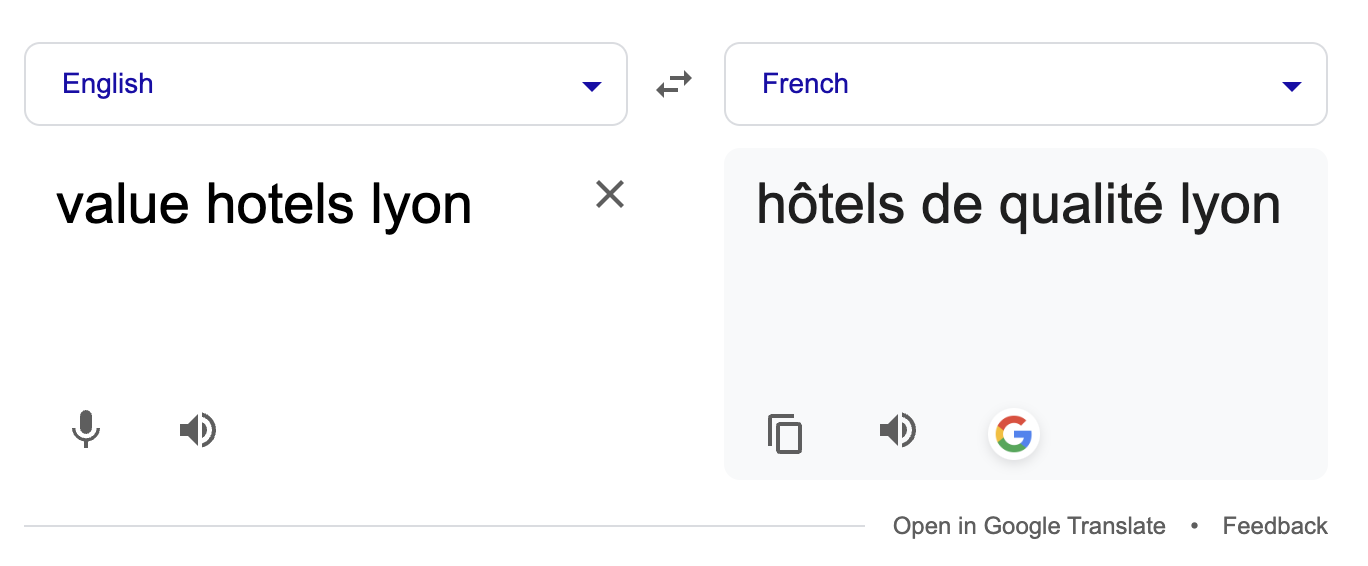
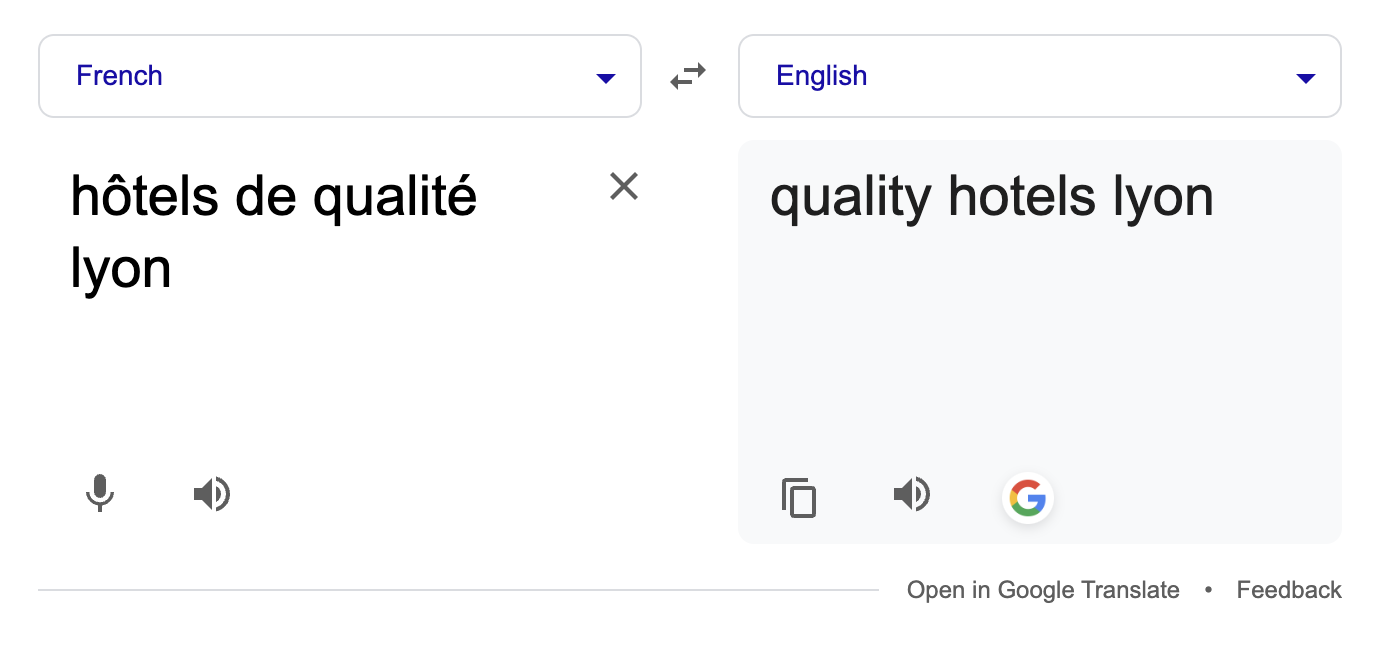
Make sure your keyword meaning and intent is correct before you start any research into search volumes and keyword competition.
3. Use local search engines (not just Google)
While Google is the most popular search engine and ad platform in English-speaking countries, there are plenty of other widely-used platforms. Consider advertising on other search engines to reach more users:
- Baidu (China)
- Sogou (China)
- Yandex (Russia)
- Naver (South Korea)
- Seznam (Czechia)
- Cốc Cốc (Vietnam)
- Swisscows (Switzerland)
Even if it’s not possible or cost-effective to advertise on these platforms, researching them can give you a better idea of how users search and how they engage with ads.
4. Test and refine your ads
As with domestic ads, A/B testing is essential to international PPC success. Experiment with different messaging, target keywords, ad design, and landing pages to understand what works for each market.
While there are plenty of variables available, it’s best to test one at a time. Alex Jackson, Paid Media Team Lead at Hallam Internet, explains:
"When A/B testing, you should pretend you’re back in high school science. Approach it like an experiment. You need to have a hypothesis to start with. And you need to be methodical by only changing one variable at a time. Figure out what you think might make your ad more successful, and tweak that while keeping everything else the same."
Use insights from your experiments to inform future or additional campaigns targeting the same audience.
5. Refine location targeting
If you’re currently targeting customers by country, it may be valuable to further segment your audience. You can target by city, town, or even postcode radius. This may be helpful if you want to use local dialect in your ads, or mention the area by name to maximize clicks:
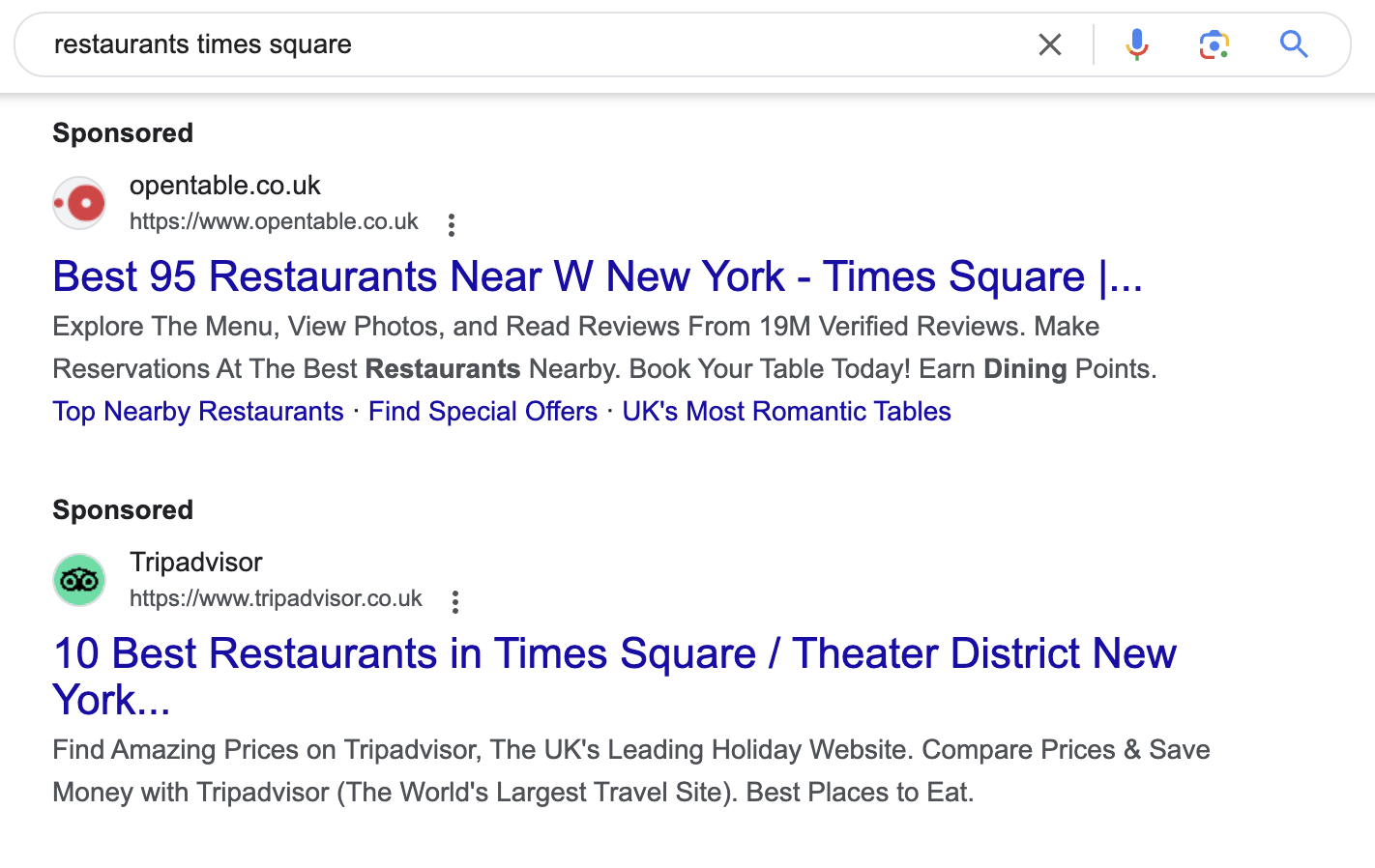
You can also capitalize on “near me” searches with this functionality. These tend to have high and immediate purchase intent, so it’s well worth spending some time refining your location targeting (especially in high value areas for your business).
Keyword localization is one of the most effective ways you can optimize international PPC campaigns. Although it’s a labor-intensive process, it’s sure to help you improve your keyword selection, audience engagement, and return on ad spend.
Localized bid adjustments
Adjusting bids is another key way to optimize your marketing spend, especially with international campaigns. International campaign performance can be volatile, thanks to rapid changes in competition, user behavior, and currency value.
With Google Ads, you can set a location target bid adjustment to dial your ad spend up or down within specific areas.
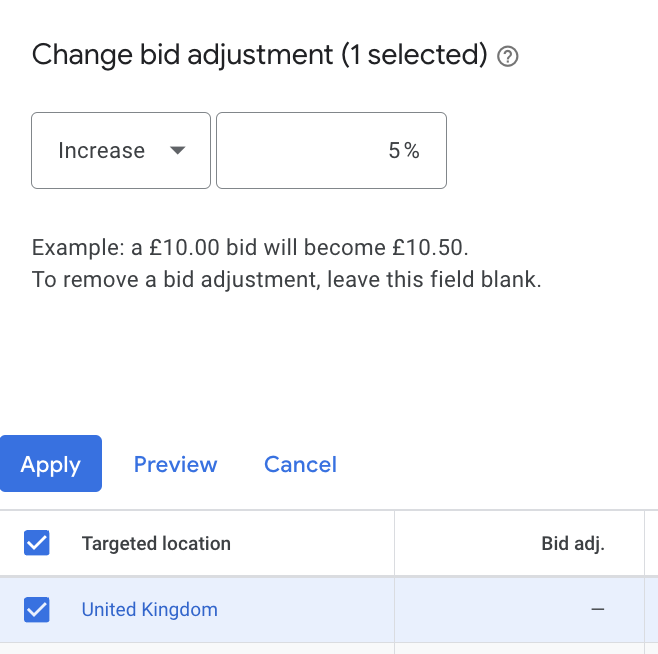
Geo-specific bidding can help you quickly reallocate your budget to high-performing markets, allowing you to get more from your ad spend. Here are five best practices for localized bid adjustments:
- Assess performance regularly — Use data to make bid adjustment decisions. If you’re seeing especially high conversions in one country, consider redirecting more of your budget there (and vice versa).
- Set up alerts — Get notified if a campaign starts to underperform (for example, if the CPC goes over a certain threshold, or your ROAS drops below an acceptable level). You can then investigate and decide if and how to take action.
- Track currency values — Set up a tracker so you’re regularly notified of exchange rate drops or rises. This can help you work out the most cost-effective way to advertise.
- Keep track of local news — For example, a city-wide event could lead to greater footfall, so you may want to increase bids during the event. Cultural or religious events also vary from country to country, so consider how these could affect buying decisions and adjust your bids accordingly.
- Account for time zones — Watch your campaigns for their peak performance times, then adjust bids to channel more cash into each campaign during its best-performing hours. For example, a restaurant chain with branches in London and New York could theoretically allocate 100% of their budget to their London restaurant from 5-10pm UK time, then redirect the spend to their New York restaurant for the same hours.
Adapting creative assets for each market
It’s expensive and time-consuming to generate new assets each time you want to create a new campaign, so it’s tempting to reuse the same creative for multiple markets. Unfortunately, this is a recipe for failure, as the same messaging is unlikely to resonate across borders.

One famous example is this ad from Electrolux. While the messaging worked in Sweden (where Electrolux was based), US audiences took a different meaning from the ad.
Not all mistakes are this clear-cut. You need to think about cultural sensitivities, nuances, and imagery, as well as language differences. Here’s how you can adapt your ad creative for cross-country audiences:
- Know your audience — Do plenty of research so you understand your audience before you write any ad copy. Think about their wants, needs, fears, and challenges. Create buyer personas to keep this information top of mind when designing your ad creative. Google Market Finder is a good place to start.
- Double check translations — Ask a native speaker (or better yet, a native PPC specialist or copywriter) to translate or verify your translation. They can ensure there are no hidden meanings, double entendres, or any other linguistic faux pas that might embarrass your company.
- Ensure visuals are culturally appropriate — Understand the kind of material that’s likely to shock or offend in certain cultures (for example, certain religious depictions are considered offensive, and many countries have a more reserved attitude to sexuality than others). Make sure your ads are acceptable to your target audience.
- Make visuals accurate and relatable — If you’re depicting your target audience in any way, make sure your ads feature people, clothing, places, and actions in a way your audience can relate to.
- Learn how to structure compelling calls-to-action — A/B test different CTAs to determine which approach works best where. This will depend on shopping habits and user behaviors.
5 advanced ad campaign localization tips
Adapting your keywords, bids, and creative are the top three ways to optimize international PPC campaigns, but there are other tactics you can use, too. Let’s take a look at five more ways to improve international ad campaign localization.
1. Using automation tools
Automation can save you time and manual work when creating international paid ad campaigns. The best tools include:
- Dynamic search ads — These ads draw content directly from your landing pages to create ad headlines. This ensures consistent messaging across your campaigns (and if your landing pages convert well, your ads should too). Just make sure your landing pages are highly specific and well-optimized for your customers.
- Automated scripts — Google Ads scripts can make your campaigns more efficient in lots of different ways. They can automatically pause underperforming keywords and suspicious ads, notify you if a campaign overdelivers, track quality score changes, and schedule ads at times outside Google’s default bidding periods.
- Automation layering — Third-party platforms like Optmyzr can act as an ad spend failsafe by automatically pausing your campaign and sending you an alert if they detect poor performance.
2. Insert dynamic locations in responsive search ads
You could spend days creating ads that refer directly to each of your target locations. Or, you could use Dynamic Location Insertion to automatically include the location name in responsive search ad copy:



This will save you tons of time and ensure your ads are personalized based on location.
3. Add location assets to your ads
Location assets (formerly location extensions) help people find your physical store, office, or premises. As well as stating your address and phone number, ads with location assets may have a clickable ‘call’ button when viewed on mobile devices for better usability.
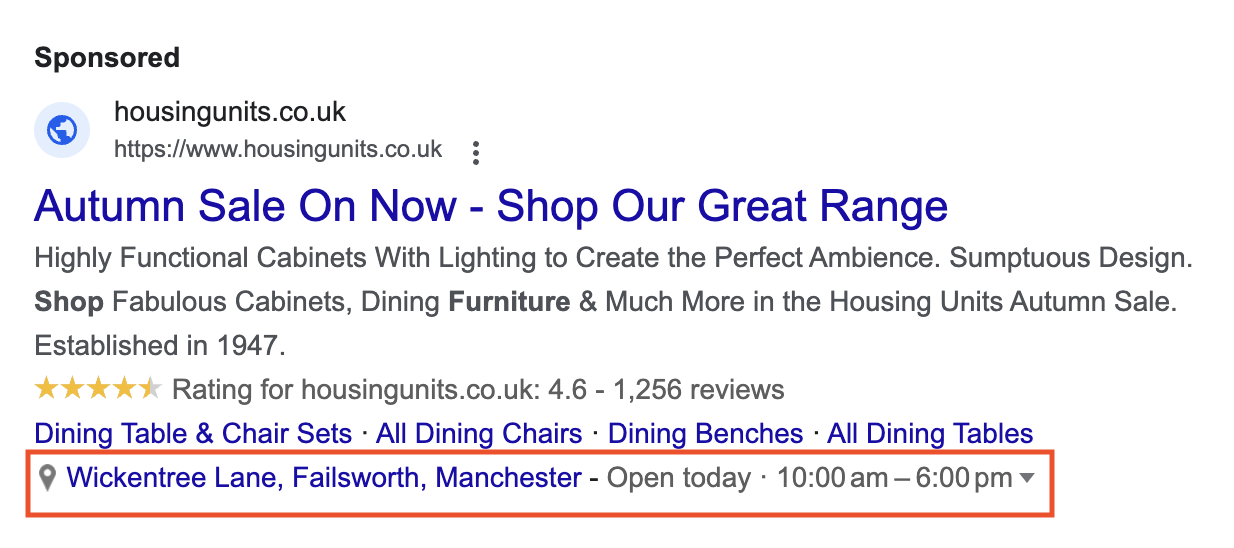
Location assets can also help your ads show up in more placements, such as Google Maps. To take advantage of this feature, make sure your Google Business profile is up to date with correct information. Then complete all your other ad assets to give yourself the best chance of conversions.
4. Perform competitor analysis
Get a better foothold in new markets by understanding what your competitors are doing and saying in their ads. Do some research to find out:
- Which keywords they’re targeting.
- How they’re positioning themselves in the market.
- The kind of messaging they share with their audience.
This can help you better understand your audience and position your business above the competition.
5. Add negative keywords for all languages
If you’re running ads in multiple languages, make sure to build out your negative keyword list with all irrelevant search terms across all languages.
What marketers think about ad campaign localization
Advertisers running international PPC campaigns face a lot of challenges. Translation is often the first hurdle:

But translating ads is just scratching the surface. In fact, some marketers highlight the dangers of relying too heavily on simply translating ads from one language to another:
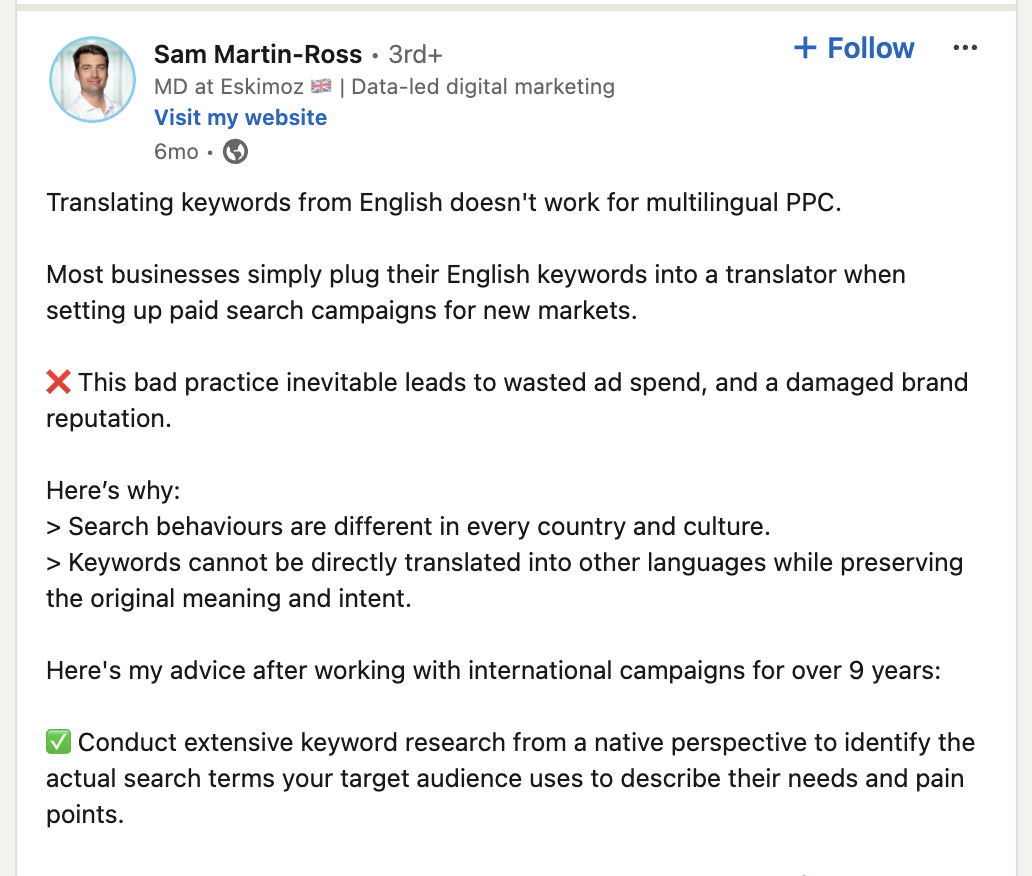
Franthoni Weinum, a multilingual international PPC expert at Carbon Box Media, explains more about the day-to-day practicalities of managing PPC campaigns in multiple languages:
“One of the challenges is the constant context switch. I’ll go in, analyze three campaigns in English, put myself in that context. If we’re talking in the US or the UK, there are cultural aspects to take into account. And then ten minutes later I’ll jump into a French campaign and start reading search terms in French. Even though it’s a non-tangible thing, it’s draining for any PPC manager.”
Other marketers highlight the difficulty of analyzing international PPC campaigns. Limited local knowledge can make it hard to understand why your ads are getting clicks but no conversions, for example. One Reddit user offers some insights:
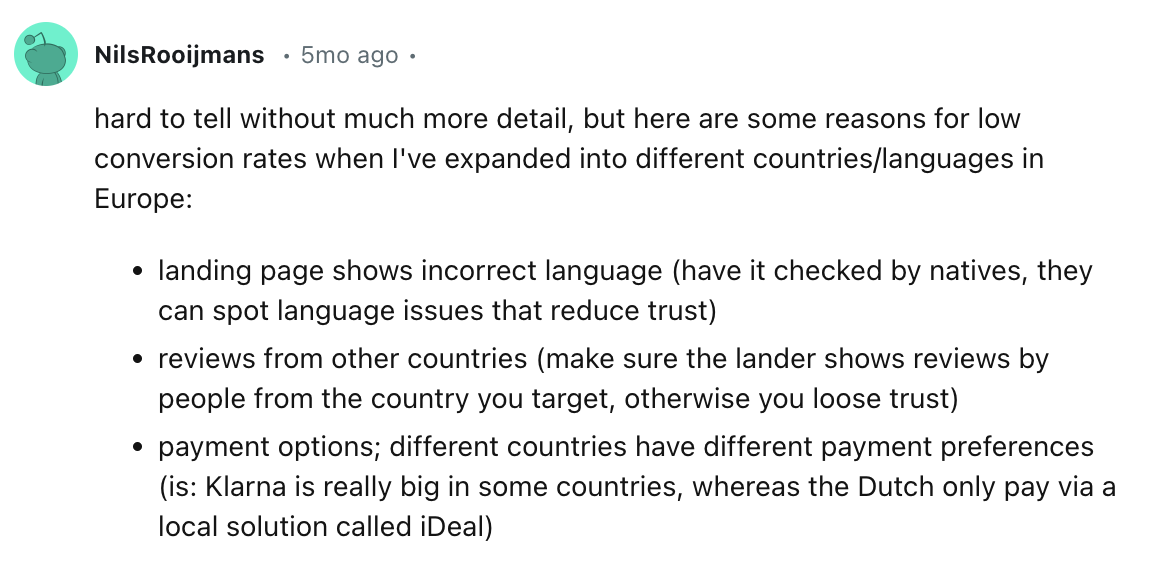
Ultimately, building your knowledge of your target markets is the best way to optimize your international PPC campaigns. That doesn’t mean learning a whole new language (although it might help!). But you’ll need to become familiar with the most common shopping habits, keep your language and messaging consistent across your entire campaign, and ensure your offer is genuinely valuable for your target audience.
Protect your international PPC campaigns from invalid traffic
Like all paid media campaigns, international PPC campaigns can be affected by invalid traffic (IVT). Bots and other fake or invalid users click your ads and drain your budget, so you have less to spend on genuine conversions. And if you’re unfamiliar with overseas traffic, it can be even harder to detect and remove IVT.
Lunio automatically filters out IVT, protecting all your ad campaigns from fake clicks and wasted ad spend. No matter where your ads are served, Lunio will remove IVT so you can focus your spend on real buyers.
Find out how much IVT is affecting your PPC campaigns with a free two-week Lunio trial.



